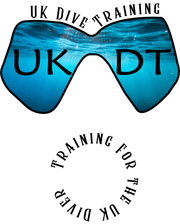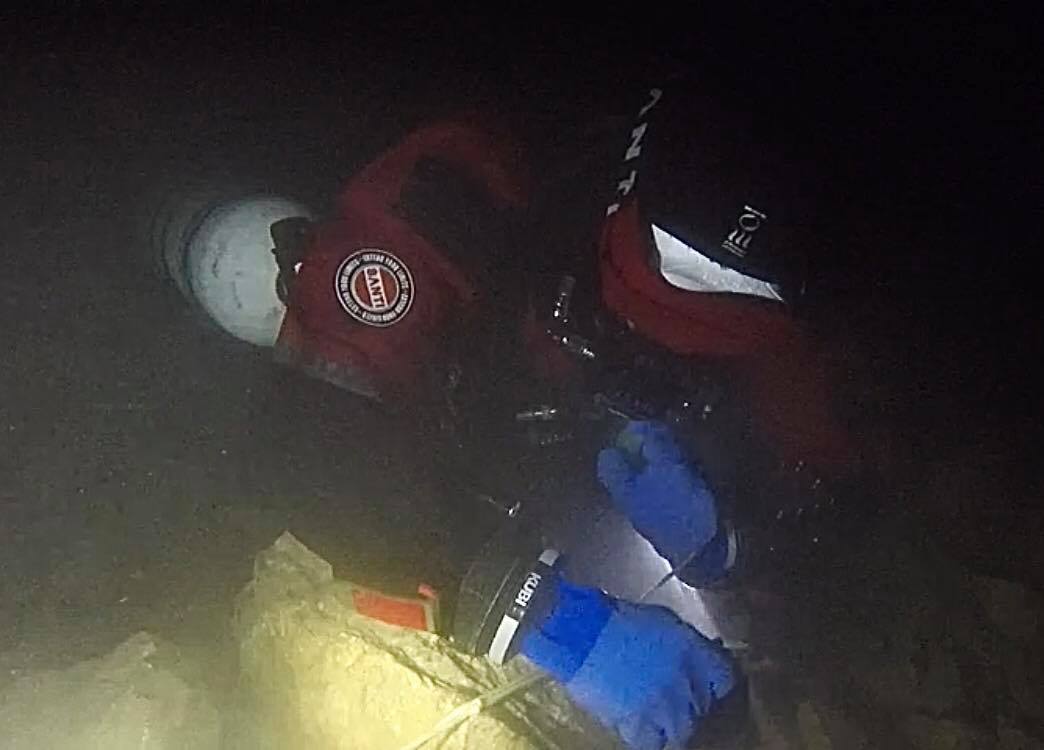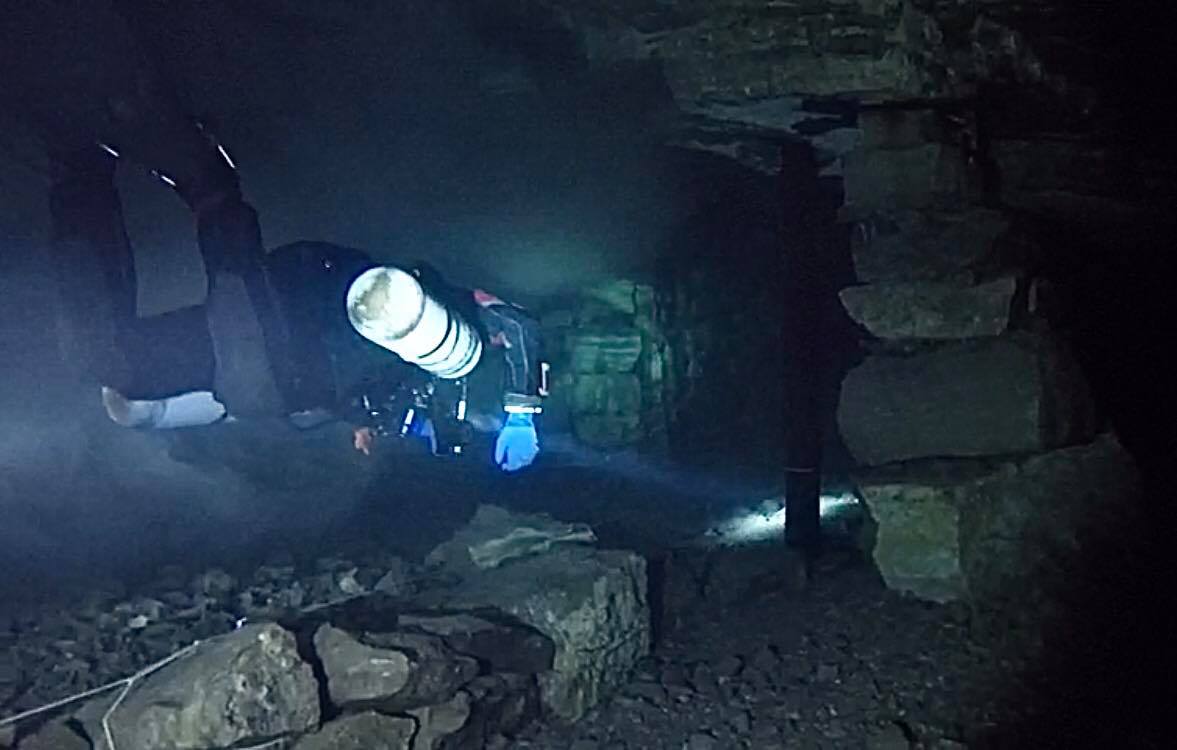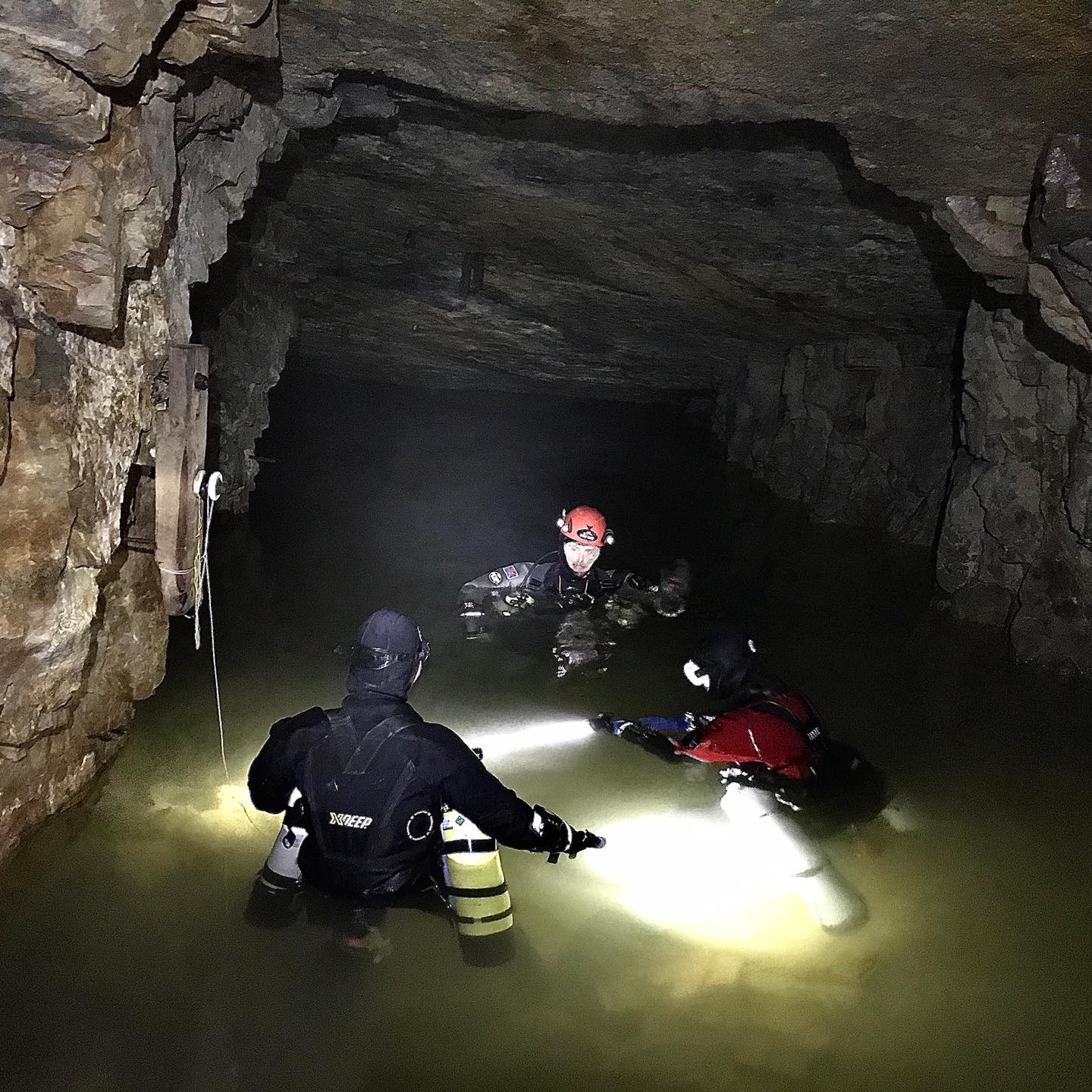Journey Underground - TDI Mine 1 - Day 4
Journey Underground - TDI Mine 1 - Day 4
The next two days would be diving at Holme bank mine.
We met in the car park at 9am, ready for another day of fun and games.
Some of the old mine workings around the entrance to Holme bank
The walk from the cars to the dive base is a lot shorter today, and while it’s a good 400-500m of Mine passage other than having to stoop for bits of it, its easy going and there’s interesting things to see on the way down. We ferried cylinders and kits down, leaving just harnesses and drysuits on the surface.
So parts inside the mine its self. The winch on the right still works.
To day the plan was to head into the mine and follow the line form dive base 1 towards Dive base 2, on the way out we would have a relaxed swim letting us look at the mine. On the way out each of us would “get lost” and the lead diver would have to notice and then conduct a lost diver drill.
Dive base 1 on the left that we would be using. Middle and right are dive base 2 that we would be swimming towards.
Before we got kitted up, we did a quick refresher on lost diver drills. This was to check that we still remembered the motions for the drill, with the most important being to mark the home side of our reel (The procedure differs to if you are using the classic UK cave diving tool of cloths pegs as line markers as opposed to line arrows that are more common outside of the UK. )
Finally we got into our drysuits, put on our harnesses and headed into the mine. We made it safely to the diving base and proceeded to get our cylinders on, test regulators, lights and check we were ready to head off.
Dive 1
The dive out was amazing, once we had left the head pool, the visibility opened to 15m. Holme bank mine has a lot more stuff in it than Diane. It defiantly looks a lot more man made. We made good time with better teamwork on the way out. I was number two and brining up the rear.
As the water level was so low our main reel only had to go 10m to tie into the main line, which as line markers in place. This meant other than marking our reel with an arrow I didn’t have to put any markers in place.
We made it as far as was practical to go on the line, it was then time to turn around and head back. This meant that I was now number 1, I knew at some point on the way back my buddy was going to disappear.
The procedure for the buddy going missing was that Michael would tell us to turn our torch off and get us to move off the line a little way. Depending on how good our team work was could determine how long the buddy could have been missing for. IF the teamwork is poor and you don’t notice for a while that your buddy is missing, you have a longer search ahead of you.
In this case our teamwork had gotten better so when I noticed that there was as much light behind me, I flashed an OK signal but didn’t get anything in return. At this point I proceeded to turn around and saw that my buddy was now missing.
I then started the process of finding a lost diver. First step was to cover my torch and see if I could see any glows from there torches (now to make this a challenge my buddy’s light was off) while I couldn’t see any torch glow what I could see was the glow of a bright dive computer.
With a bearing to start on I dropped and arrow, this was much harder than yesterday as most Mines and Caves in the UK use 3mm line rather than 1.5m tech line that is common elsewhere. My arrows went on the line but it took more effort. I then tired my search reel into the arrow and turned back to where I had last seen my buddy. In this time, they had moved (Michael got us to move after first being spotted as in reality the buddy may move so you will still have to search). I then proceed to search around, after 30 seconds I located my buddy who was unresponsive. At this I locked of the reel, dropped it and towed my buddy to the line, put their hand onto the main line and pushed them in the direction of home. At this point the drill was ended.
With the team now rearranged so that I was number two we set off again back towards home. After a minute or two Michael prompted me to shut off my light and move off the line into a corner. I then watched as my buddy noticed I was missing and proceed to look for me. Once they spotted me and got there reel out, I was asked to move further down the cave and up to the ceiling. My buddy then spent some time looking for me, and finally found me and brought me back to the line.
Michael asked me to try and head the wrong way down the line but before I could move my buddy had already put my hand on the main line and pushed me towards home. With this the drill was done and we tided up and headed back to the head pool.
We had a quick debrief for the dive with the feedback being to make sure we got used to looking up and around the environment as well as ahead.
Dive 2
With the brief over we dropped back in to do dive 2, this would be to swim the other way up the line going as far as we could until the water level was two low for us to carry on. We would then make our way back and do another lost line drill, this time the drill would only end would we had our hands on our primary line that was joined onto the main line.
The dive out was just as spectacular as the first one with some incredibly large bits of ceiling on the way where the roof has collapsed over time.
Once we reached the end of the line (due to the very dry summer the water level is a good 3-4m lower than it can be in winter). We turned around and headed back. Once we had got to a larger bit of passage we stopped and proceed to do more lost line drills. My buddy went first so I sat on the line and got to watch them do the drill. After a 5 minutes they made it to the line and headed back towards home. Once they made it to our reel and moved over it, we turned around and went back to tidy the reel up.
Then it was my go again. Back on with the blackout mask and Michael pulled me off line. First thing I did was stow my torch to have both my hands free. For this dive I had borrowed a little safety reel from Rob to see how I found it compared to the spool I had been using.
I deployed the reel and after a minute of fighting with the snoopy loop I manged to get it open and found a nice large rock to put I on, I then started to make my search. I started moving and quickly found myself against rocks the side and top of the Mine. This meant I was lower down off the line so I then felt around and started to move back higher up the slope towards where I hoped the line would be.
After a few minutes of slowly searching I felt my arm catch the line. I then wrapped my reel over the line and reeled it in to take up the slack and clipped it onto the line. Finally, I dropped a arrows onto the line and headed in what I hoped was the correct direction. After a little swim I came to our reel and moved over onto our primary line heading out of the water.
With the drill over we again headed back and cleared up my reel and headed out of the mine. Once back in the head pool Michael was happy with our performance. He then asked how we were feeling and if we fancied another short dive to just look around.
I was up for it but my buddy was a bit cold so headed out of the water and up into the sun.
Dive 3
This was only a short dive but me and Michael went along the mainline al the way to dive base 2. This involved a tighter passing though to get there, while nothing major getting 3 people in then turning around in good order can be a bit of a pain especially as the water is lower now.
On the way we had to mark our way on the line as someone looks to have run a new bit of line in a loop around a bit of the mine.
Now line markers and T-junctions are not included in Mine 1/into to cave level and are normally left for Mine 2/Full cave. But in most UK mines rather than jumps being indicated as you would find in the popular caves in France, Florida and Mexico most UK mines have permanent T’s in them. This means if you were to stick to the strict standards in a lot of the Mines at Mine 1 level you would be restricted to 50-100m in most cases. This would severely restrict how much you could do, and prevent any real progress or expiscate post course. Because of this Michel introduces Line marking in Mine 1, allowing you to follow the main line down the Mine past the T junctions. The idea being that until Mine 2, you don’t go off the main line, but are aware of T junctions and can safely mark your return journey.
This meant that with some line markers dropped we could make the 200m journey from our reel to dive base 2. Safely navigating the new line that has been put in. Without this skill we would have been stuck after about 100m of line, and if we had used dive base 2 we would have had 20m before having to turn back due to this new line.
Once we were back on the surface in dive base 1 we took our cylinders off, turned our gas off and put our find and masks out the way. As we would be diving Holme bank again tomorrow, we were leaving our cylinders and equipment at the water’s edge making tomorrow a lot easier.
Due to the max depth of the sight being only 4m we had only used 60ish bar in our 12L cylinders leaving plenty for tomorrow.
Once we were out of the mine and warming up, we set out our suits and undersuit to dry and had a bit of lunch.
We then proceeded to do the dry skills for the next day. Theses were a team lost diver drill, used if when diving in a team of three, one diver is lost and the other two search for them. And a blind out of gas swim.
We ran though theses on some line that Rob had put up for us. The key to the lost diver drill is to communicate and take separate jobs to speed up the process. With one diver putting down a line marker while the other gets their reel ready, one diver then proceeds to search while the other stays on the line to act as a “light house”.
With the blind out of gas swim, the key is trust with the lead diver doing the navigation and moving the out of gas divers’ hands over the belays to help speed up the process. With some practice this can become quite quick and cuts down on each diver having to feel for both sides of the belay and then moving there hands over.
With the diving and drills over for the day I used the opportunity to walk into the little town of Bakewell and enjoy the sun. I also picked up some Bakewell tarts to bring home to keep my partner happy.















